The procedure for preparing grapes for winter refers to the mandatory measures that ensure stable growth and fertility of the vine. The full readiness of the culture for the winter period will save the vineyard from freezing. The technique of caring for a fruiting crop can be different and directly depends on the region where the vine is grown.
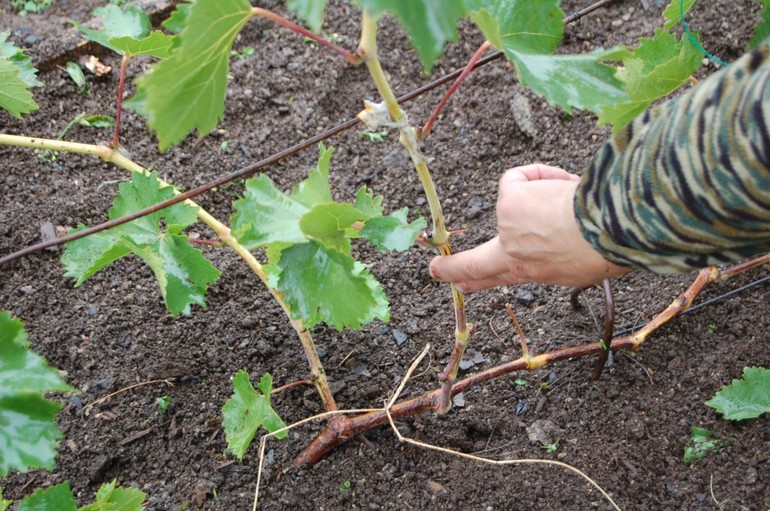
Content
Autumn Preparations
The health and fertility of the grape culture largely depends on how correctly the autumn work was done to prepare the grapes for wintering. Appropriate care of the vine in autumn will give the grapes extra strength and ensure its reliable preservation even in severe winters.
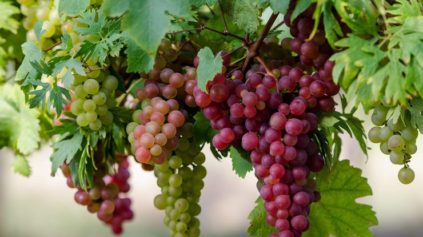 You may be interested in:
You may be interested in:Watering technique
During the period of intensive leaf growth and ripening of berries, the culture needs to provide regular watering. Many gardeners make a mistake when they fill the vineyards with plenty of water, believing that this will help increase productivity. Excess moisture can turn into unpleasant consequences:
- deterioration in the taste of fruits;
- decay of the bush;
- the occurrence of various diseases.
To avoid such troubles, the soil needs to be moistened in moderation. If sandy soils prevail in the planted area, watering should be done often, using a small amount of water. Clay soil suggests a rarer frequency of watering. However, the amount of water when watering the vine planted on clay soil needs to be increased. When performing this procedure, you should focus on several factors:
- groundwater depth;
- amount of precipitation;
- air temperature.
If autumn turned out to be rainy, then the vineyard does not need additional watering at all. With the approach of winter and a gradual decrease in air temperature, the frequency of watering events must be reduced. Properly performed work will allow to saturate the grape bush with moisture to the necessary extent and increase the frost resistance of the fruit bearing crop.
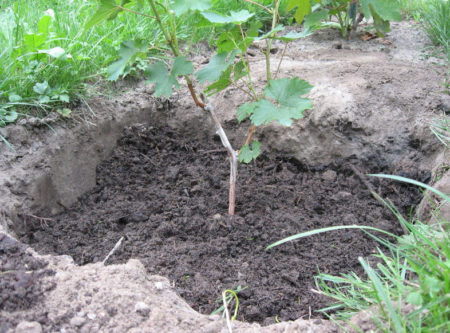 You may be interested in:
You may be interested in:Fertilizing and trimming
To properly prepare the grapes for winter, the soil in the planted area must be well fertilized. After ripening the berries, the fruit bearing culture weakens greatly and is unlikely to be able to endure the harsh winter without additional feeding. The vine does not need annual fertilizer. The grape bush will tolerate the winter well if you make top dressing at least once every 3 years. Experienced growers are advised to fertilize the crop with a mixture that includes:
- 30 gr superphosphate;
- 30 gr potassium fertilizer;
- 1 kg of chernozem soil.
This amount of mixture is enough to feed one bush. In addition, to increase the immunity of the vineyard, the vine is watered with a solution that is prepared from 10 liters of water and phosphorus and potassium fertilizers dissolved in it. The depth of soil wetting with such a liquid should be at least 25 cm. Various micronutrients can also be added to the composition of the feeding liquid:
- potassium permanganate;
- ammonium molybdenum acid;
- boric acid;
- iodine.
Vineyard pruning is a mandatory event that helps increase yields, improve fruit quality and accelerates the ripening of berries. Pruning a bush greatly simplifies the application covering materials. It is important to remember that this procedure can be performed only after the leaves fall completely. Too early pruning will lead to a shortage of plastic substances and increase the risk of shrub breakage in the winter. Trimming the vine after frosts is very problematic, as the sleeves become brittle and can be damaged in the wrong place. The optimal period is mid-September.
When carrying out such work, damaged and dried sleeves are removed. The removed parts of the vine need to be burned to prevent the spread of the infection to healthy grapes.
The final stage of pruning is the stopping of extra shoots that interfere with normal lighting and airing of the crop. At least 30% of spare buds should be left on the vine, which will be useful in case of freezing or damage to the main sleeves by rodents. Unripe shoots are subject to mandatory removal, as they will die in the winter and will represent an additional source of infection in the spring.
Treatment for pests and possible diseases
At the end of pruning, the vineyard should be treated with a special solution that rid the crop of pests and diseases. This will not allow the development of wintering forms of pathogens and destroy the parasites that live in the vine. One of the best means to kill the infection is considered a soda-salt solution, which is prepared as follows:
- 10 tablespoons of salt are added to a ten-liter bucket of warm water;
- 5 tablespoons of baking soda are poured into the resulting liquid;
- the composition is thoroughly mixed until the bulk components are completely dissolved.
The entire grape bush is processed, not excluding leaves and buds. For the complete destruction of pests, the bush must be sprayed at least 3 times. The number of harmful insects living on the vine can be reduced by carefully digging the ground around the bush.
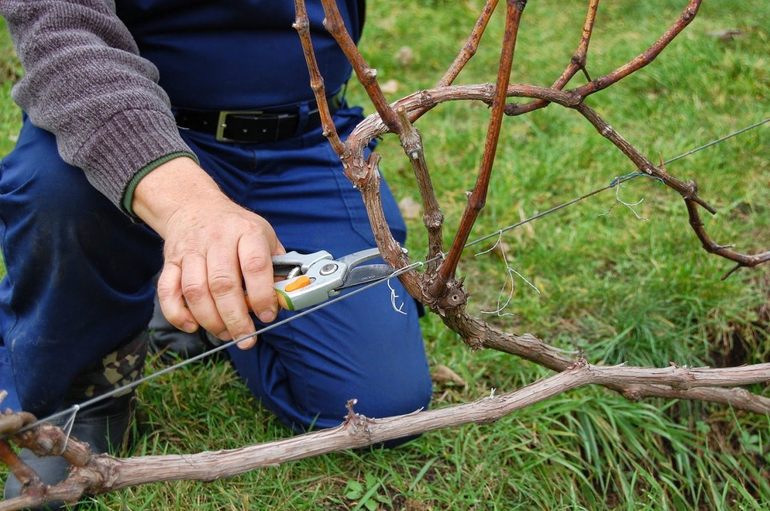
Immediately before covering the culture for the winter, it must be treated with a solution consisting of 100 g of copper sulfate and 10 liters of water. To scare away mice from the grapes, a small container with carbide should be placed under the covering material. This substance absorbs excess moisture well, and the odor released when the carbide is moistened will scare away rodents.
Shelter of culture from frost
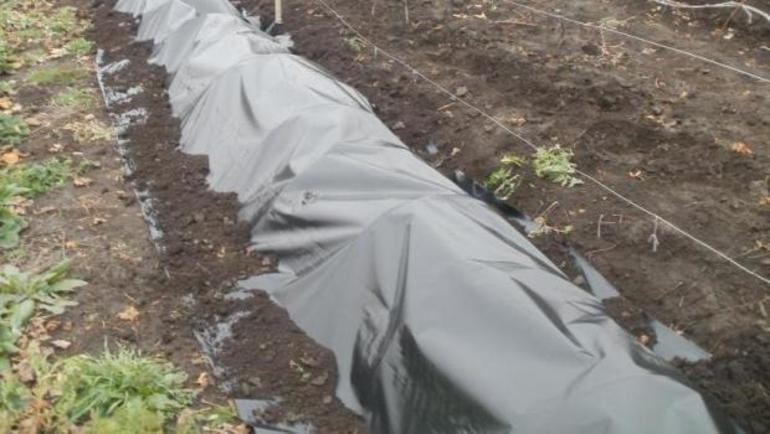
In the midland and northern regions, winter frosts are the main danger to vineyards. To protect the vines in the cold season, it is necessary to insulate the bush. For this, non-woven materials, as well as wooden panels and boxes, can be used. The choice of insulation is largely determined by the climatic conditions of the area in which grapes are grown, as well as the variety of the vine itself. Over the past 10 years, varieties that tolerate low temperatures have been developed.
In the northern regions, quite a lot of conifers grows, so you can use spruce or pine spruce to shelter grapes. This material passes air well, which eliminates rotting of the culture due to high humidity. In addition, the lapnik reliably protects the vine from snow and has excellent thermal insulation characteristics.
When growing grapes in trenches, it is better to use wooden boards as a heater. Treated and laid in a trench, the vine is closed with wooden shields.The fit of the boards will be loose, which will provide the necessary air circulation. As the wooden boards are covered with snow, the thermal insulation properties of the shelter will improve. If frosty weather has already settled on the street, and the snow has not yet fallen, wooden panels should be covered with non-woven material, which will prevent heat loss.
The use of a polyethylene film as a heater is extremely undesirable, since polyethylene does not pass water and air at all, which will inevitably lead to the appearance of condensation and the appearance of foci of mold. Shelter grapes are usually produced in late October or early November.
Pre-winter training in various regions
When harvesting grapes for the winter in the middle lane, the first thing to do is to remove the leaves remaining on the vine. Next is croppingat which damaged and unripe shoots are removed. Grapes should be harvested for the winter on sunny days, when the likelihood of rain is minimized. The vine in the middle lane is best planted in holes with a diameter of 70 x 70 cm and a depth of about 20 cm, which will greatly simplify the preparatory measures for winter.
The pre-winter preparation of the culture in the middle lane is divided into several stages:
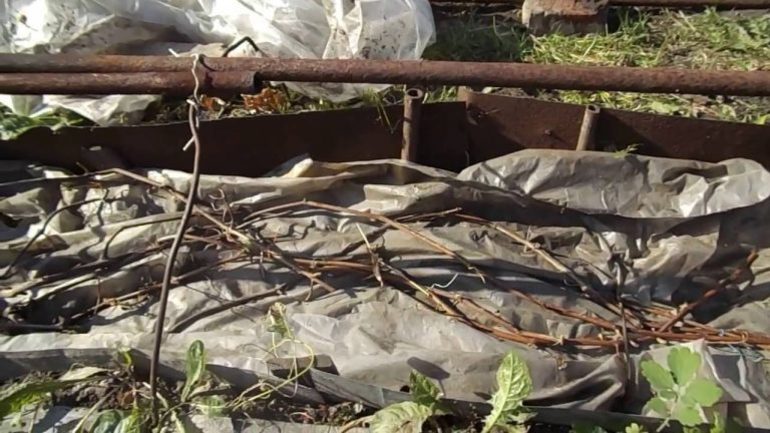
- the processed sleeves are folded and laid in the hole;
- a tank with carbide is placed at the bottom;
- the hole is covered with a wooden shield.
The methodology for preparing grapes for winter in Ukraine and Belarus does not differ from that used in the middle lane, since the climatic conditions in these regions are very similar. Preparing grapes for winter in the Urals or Siberia requires a more serious approach, due to harsh winters in these regions.
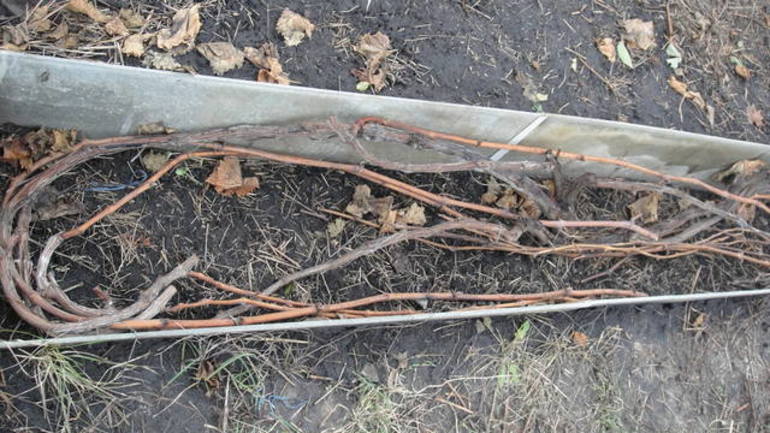
In order for the vine to survive the cold winter, it will be necessary to make catharization, which consists in stopping the dew roots to a depth of 20 cm. The pit formed after catharization must be filled with dry sand. After watering and fertilizing the sleeves of the vine are folded and covered with coniferous spruce branches or a wooden shield. As an additional insulation, sawdust or dry leaves of trees are used, which are poured over the spruce or shield. To prevent them from being inflated by the wind, a single layer of spunbond is laid on top.
Separately, it is worth noting the preparation for the winter of young grapes. Young seedlings planted this year do not require circumcision. Grape bushes are pruned only from the second year. With the winter preparation of seedlings, there is no need to apply additional fertilizers, since the soil has already been fertilized when planting vines. Feeding a young vineyard should begin in the fourth year of life.

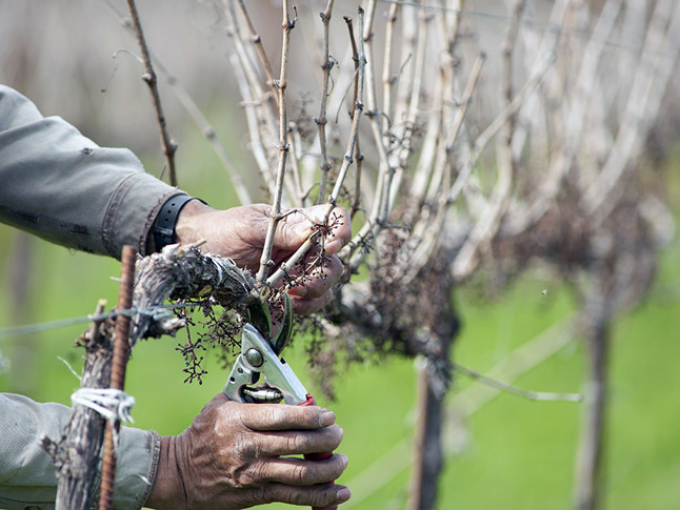
 Non-covering winter-hardy grape varieties for Moscow region
Non-covering winter-hardy grape varieties for Moscow region How to keep the vine in winter
How to keep the vine in winter When can I transfer grapes to another place in the fall
When can I transfer grapes to another place in the fall How to cover and prepare grapes for the winter in the suburbs
How to cover and prepare grapes for the winter in the suburbs
Evgeniy
The article is entitled about grapes in the middle lane, and photos from a vineyard with a winter landscape were inserted, as in the south. Or in the middle lane grapes are grown already in the standard culture? Another BLNP. The article says that pruning should be done after the leaves have completely fallen, and there is a photo right there: two peasants cut and pin the vine with green leaves. We must be careful. And before publishing, you need to carefully review at least three times so that later there are no questions and there is a CONFIDENCE in publication.